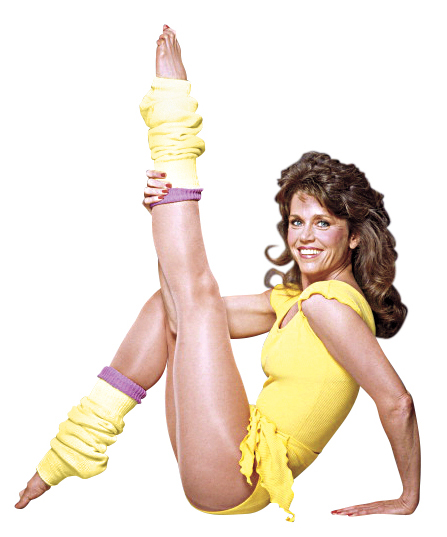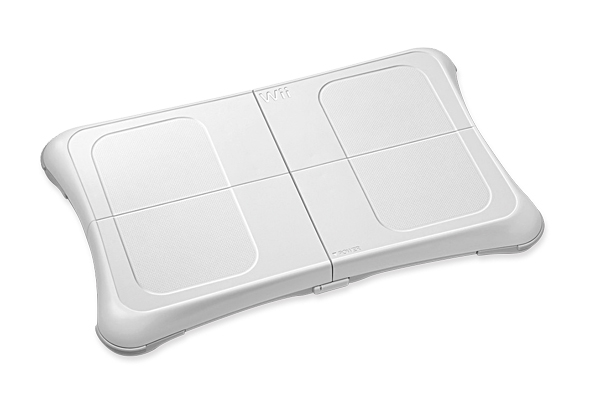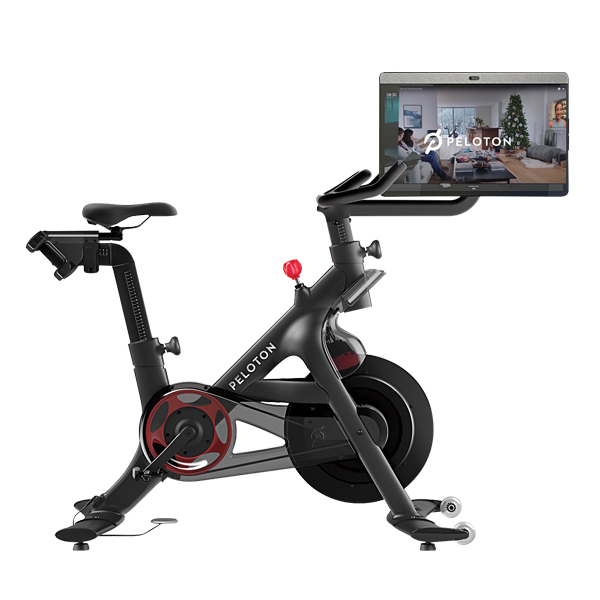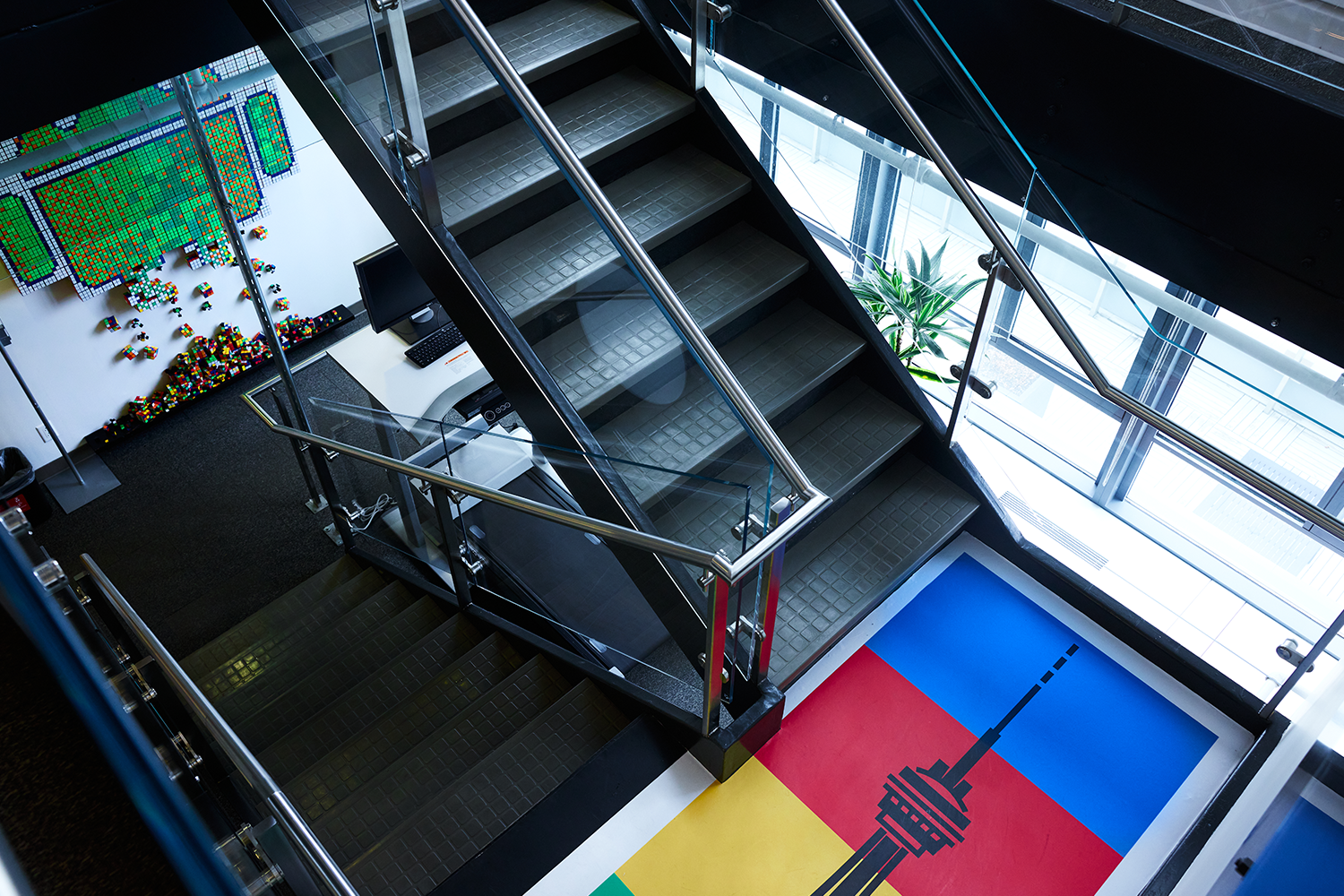From Jane Fonda to Peloton, the History of At-home Workouts

When COVID shuttered gyms and turned living rooms into workout studios, it forced a sprint toward virtual exercise—ably abetted by technology companies who’d been waiting to lure us from the CrossFit gym and into their screen-mediated, biometrics-obsessed alternate realities. How did we get here—and where will subscription exercise go next?

↓ Low, 1951
Enter the “Godfather of Fitness”
You might know him better for his Power Juicer, but in the 1950s a jumpsuited Jack LaLanne was famous for a long- running daytime TV exercise show where he and his dog, Happy, urged housewives to get off the couch and move, foreshadowing the workout videos soon to come—along with toxic pressure for women to stay fit as part of their wifely duties.
↑ High, 1982
Jane Fonda changes the game one high-cut leotard at a time
An ineffable combination of star power and moves like “pulling weeds” captured America’s imagination, making Jane Fonda’s Workout the top-selling VHS tape for six years running. (There was also a vinyl LP version that was certified double-platinum.)


↓ Low, 1990s
An onslaught of celeb workout videos
By the early ’90s, fitness videos made up nearly 10 per cent of all VHS sales. Everyone from La Toya Jackson to the Golden Girls’ Estelle Getty released some version of an exercise tape—and they’re now gathering dust in the bargain bin of your local thrift store.
↑ High, 2007
Wii Fit sells 250,000 copies in its first week
This smash hit video game hauled us off our couches and onto its balance-board device, impelling us to bat at imaginary tennis balls in our living rooms. The board, which doubled as a scale, was an early precursor to the fitness-tracking gadgets (Fitbit et al.) that became ubiquitous soon after.


↑ High, 2009
The dawn of the fitness influencer
When Blogilates founder Cassey Ho uploaded her first workout video to YouTube, she couldn’t have imagined the empire she would spawn: a clothing line, a book deal and, of course, ad revenue from her 900 million views. Countless other burgeoning fitness influencers followed: Adriene Mishler is worth around $3 million, and, closer to home, Hamilton-based Maddie Lymburner made an estimated $1.3 million in 2020.
↓ Low, 2019
Peloton’s disastrous marketing campaign
Peloton, creators of the original virtual spin class, lost $1.8 billion in value after airing a sexist, dystopian TV spot where a man buys a bike for his female partner, who records a video diary celebrating how much it changed her over a year. It was…not well received.


↓ Low, 2020
IRL gyms pivot to digital—with mixed success
When the pandemic shut down workout studios, owners scrambled to get online. For some gyms, this overnight pivot to virtual classes helped them stay afloat. For others, it wasn’t enough: One in five fitness studios in the U.S. closed permanently by June 2021, according to a Global Health & Fitness Association survey.
↑ High, 2021
New tech brings us back together
Many of us spent the pandemic wearing our Lulus 24/7, so it’s fitting that the athleisure giant would move into the subscription-workout space. About a year after acquiring New York-based Mirror, which sells a reflective screen that displays interactive video workouts, Lululemon brought the product to Canada in 2021. Around the same time, Apple introduced a new feature to its Fitness+ platform where up to 32 people can take a class “together,” streaming it simultaneously and competing to rack up points on their smartwatches.

What’s next for at-home workouts?
We asked experts Jennifer Lau, principal at Fit Squad, and Dr. Stuart Phillips, a professor of kinesiology at McMaster University, to look into their crystal balls.

Where will we work out in the future?
“You can’t replace the experience of in-person coaching—there’s only so much you can translate through a screen. Clients just aren’t as motivated to train virtually when they have the option of doing it in person. We did virtual coaching during the pandemic because we didn’t have a choice to stay open, but people are coming back in person—and I’m hearing stories about the Peloton just being a clothing rack now.” —Jennifer Lau

“There’s a gamification to exercise now. Playing is a part of our DNA, and these virtual workouts are grown-up games. All of a sudden, exercise is enjoyable, especially when you’ve got a Peloton instructor who’s telling you their life story and saying ‘You’ve got this!’ But you can also choose to turn it off if you don’t want them in your face. The next evolution of this reality is ‘put on some goggles and climb inside this virtual gym.'”—Dr. Stuart Phillips










